Growing tender roses such as hybrid teas and floribundas can be challenging enough in temperate areas, but in the north and the far north, they require even more effort. Some rose enthusiasts have been willing to put in that extra effort in the past, resorting to extreme measures as the Minnesota Tip to overwinter roses. Even with these heroic measures, many roses still succumb to winter cold.
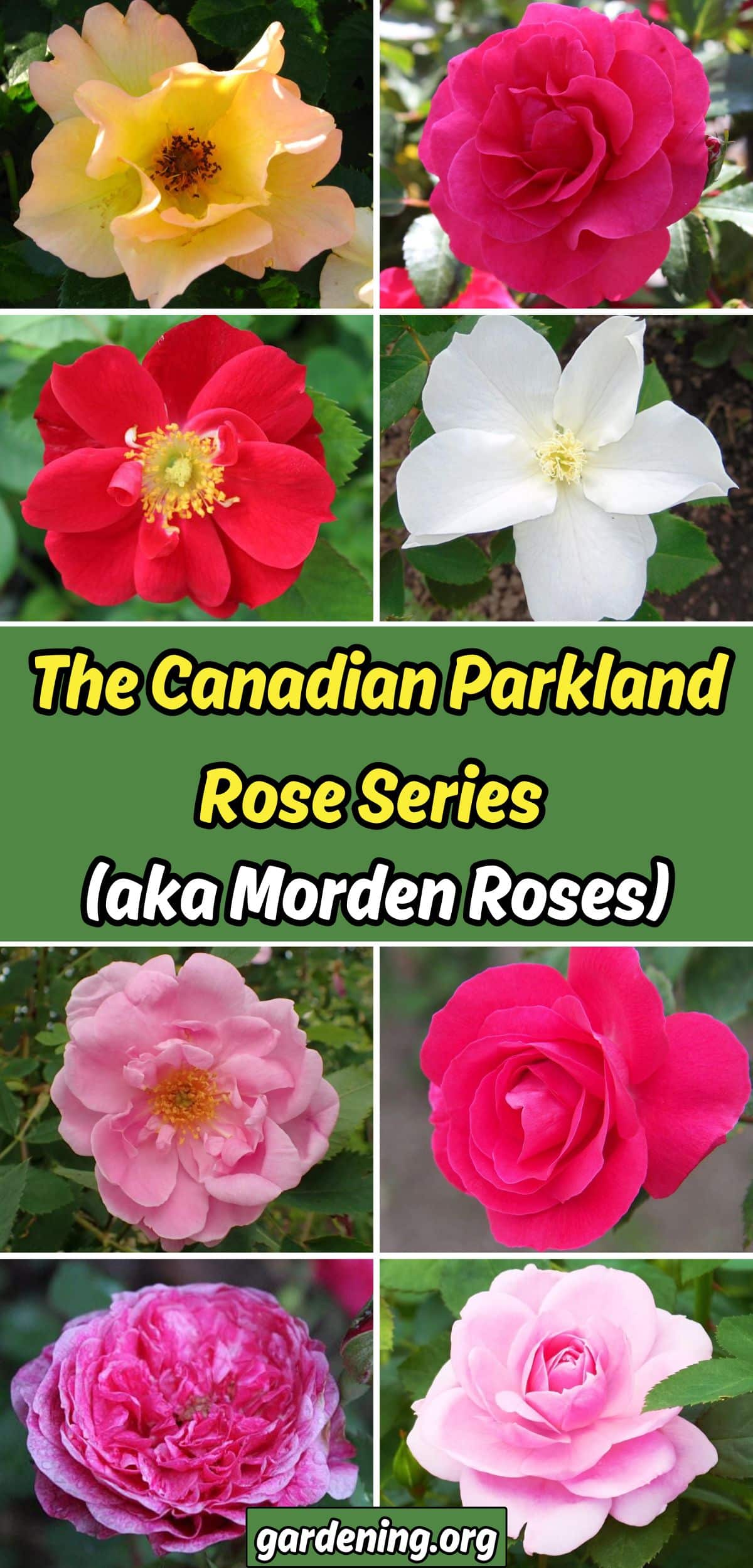
That’s why the Parkland Series roses were developed at the Morden Research Station in Manitoba, Canada. These roses withstand extreme cold temperatures as well as hot, humid summers, allowing more people to enjoy roses with a lot less effort.
Overall, the Morden roses are easy to care for, with good disease resistance bred in, making them environmentally friendly (requiring less spraying).
Though roses in the Parkland series are not as hardy as the Canadian Explorer series, they’re still absolute winners in the North – and in more temperate climates.
Jump to:
- How were the Parkland Roses bred?
- Hardiness Ratings of Parkland Series Roses
- The Resilient Roses of the Parkland Series!
- ‘Morden Blush’
- ‘Prairie Dawn’
- ‘Morden Snow Beauty’
- ‘Winnipeg Parks’
- ‘Morden Sunrise’
- ‘Adelaide Hoodless’
- ‘Morden Centennial’
- ‘Morden Fireglow’
- ‘Hope for Humanity’
- ‘Morden Ruby’
- ‘Morden Belle’
- ‘Morden Amorette’
- ‘Cuthbert Grant’
- ‘Prairie Joy’
- ‘Prairie Celebration’
- ‘Morden Cardinette’
- Conclusion
How were the Parkland Roses bred?
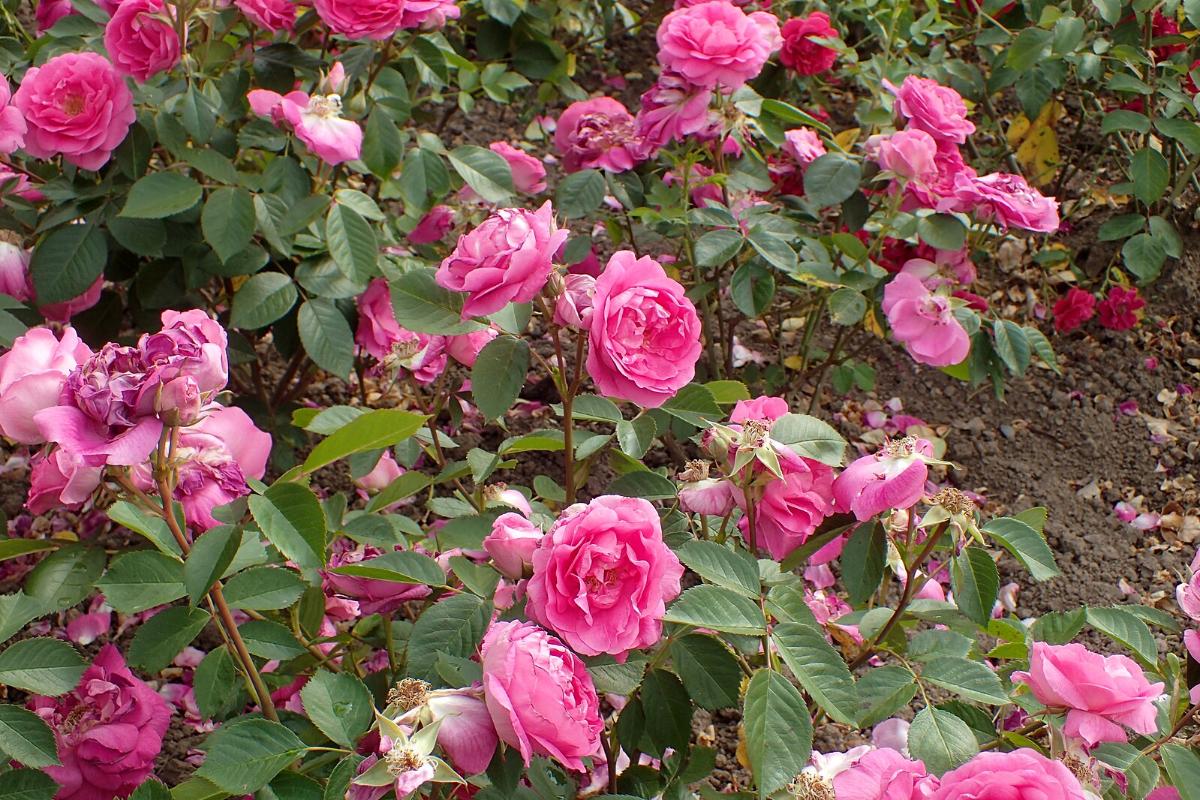
Growing roses in Canada had been beset with challenges from the moment the first settlers brought over their roses from the Old World. Hot summers and freezing winters in eastern Canada struck down the less hardy roses. On the great prairies, European roses croaked in the burning summers and the cold dry winters.
Because of this, Agriculture Canada at the Morden Research Station developed the Parkland roses. They made complex crosses of hardy species roses, including Rosa rugosa, Rosa arkansana, and others, with modern cold-hardy roses to get these tough new varieties.
Roses in the Parkland series must meet these requirements:
- Hardy to at least -35°C (-31°F).
- Disease resistant.
- Able to survive with only snow for winter protection.
- Need only minimal pruning (including deadheading).
- Flower repeatedly all through the summer.
- Come in a variety of colors and sizes.
- Able to grow on their own roots (not grafted onto a rootstock).
- Rapidly regrow in the spring and flower in the same year, even if the rosebush has been killed down to the ground.
Species roses were used to increase disease resistance and boost hardiness. Rosa arkansana, the prairie rose native to Manitoba, was the backbone of the breeding program.
Most of the Parkland roses will die back to the ground in extreme cold, but the crown and roots remain viable underground, so the roses will come roaring back in spring. When first planting a Parkland rose, be sure to dig a big hole, add in compost and other soil amendments, and water the rose in well. Mulch the rose as well to help it out.
Some Parkland roses don’t want to bloom in the first or even second years. Don’t worry. They are expending all their energy toward creating a sturdy root system that will allow them to regenerate themselves every spring. Blooming would take much of that energy away from this work. Help your rose by snipping off developing rosebuds during the first year.
Hardiness Ratings of Parkland Series Roses
The researchers developed a specialized way of defining plant hardiness based on three considerations.
- Survival – This rating indicates the coldest hardiness zone in which the plant can survive. Winter damage will prevent the rose from reaching most of its ornamental characteristics. When survival is a struggle, a rose is not going to be at its best when it comes to blooming, disease resistance, vigor, or anything else.
- Use – Indicates the coldest zone in which some, or all, of the rose’s ornamental potential can be expressed despite winter damage. The rose might do well at a few things, like reblooming, but not in all things, like disease resistance or vigor.
- Full Ornamental Potential – The coldest zone in which the rose is unaffected by weather. The rose doesn’t have to struggle, and it can achieve its full glory in the garden. In this zone, it’s going to be able to resist diseases, bloom, and grow vigorously.
Every rose has its limitations. A rosebush that’s a blooming powerhouse in zone 4 might be much less effective in zone 2a. Harsh conditions can do that to you. However, the Parkland roses will still be good at “growing where they’re planted.”
The Resilient Roses of the Parkland Series!
While researching this article, I ran into some confusion about which roses were actually in this series and which were not. I found an old pamphlet from Agriculture Canada listing the roses in this series, and the rest were found via a series search on Help Me Find.
One rose, ‘Assiniboine,’ was listed as a part of the Parkland series in the 2005 Canadian Rose Annual; however, this rose apparently is not a repeat bloomer – one of the criteria necessary to be in the Parkland rose series – and it wasn’t included on any other rose list.
‘Morden Blush’
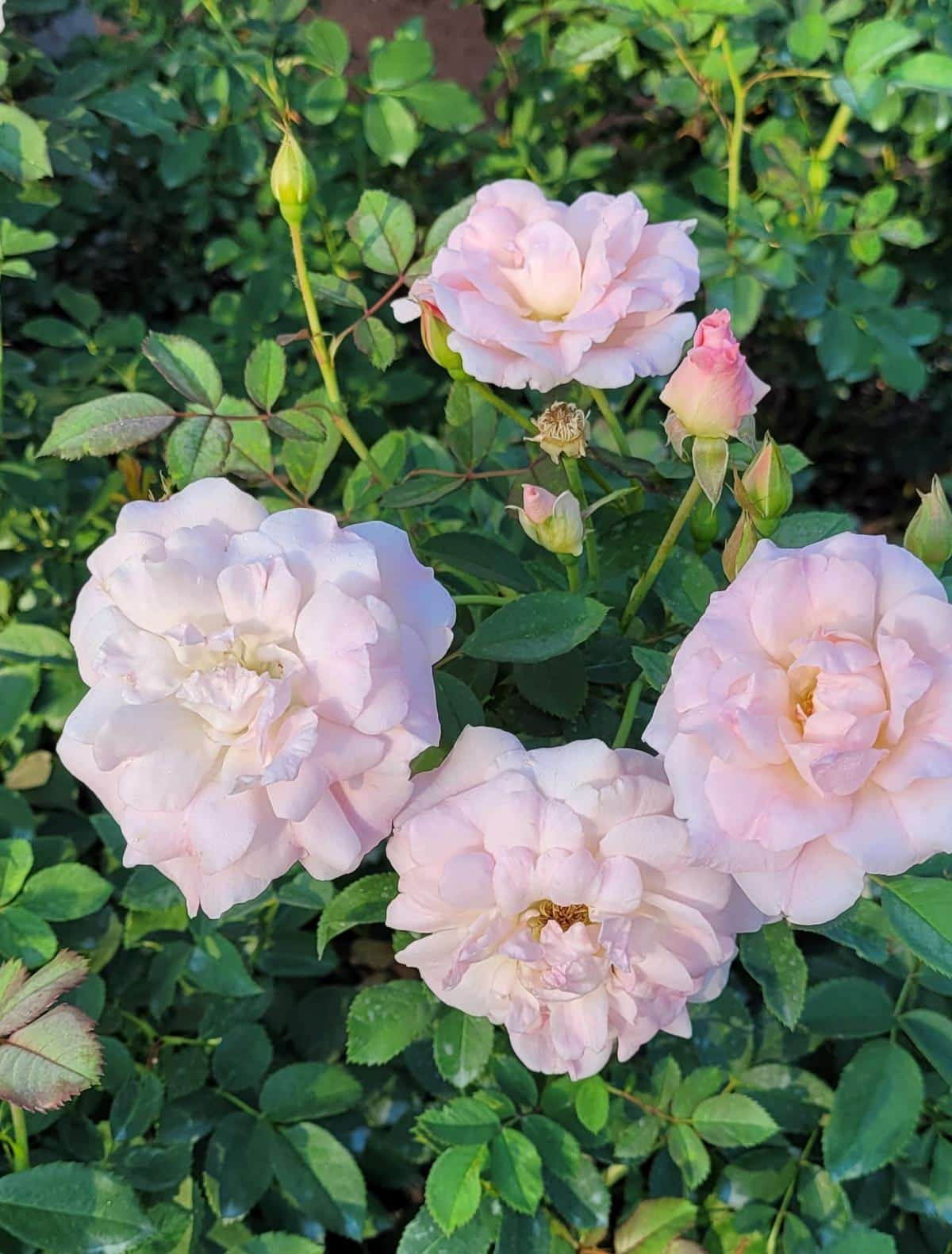
| Introduced: | 1988 |
| Breeder: | Henry H. Marshall |
| Color: | Pink to ivory to white |
| Fragrance: | Mild |
| Size: | 2’ to 4’ |
| Zone: | 2b to 7 |
| Cultivar Group: | Shrub |
| Repeat bloomer |
‘Morden Blush’ is a low-growing shrub that has decent resistance to powdery mildew and blackspot and has good heat resistance. This rose makes a very tidy shrub that tops out at about three feet tall. ‘Morden Blush’ is the longest and most floriferous bloomer of all the Parkland shrub roses, from late spring until a hard freeze.
The rose blossoms change color due to temperature! In cool temperatures, they’re light pink, but in heat, they turn ivory to white. Heat doesn’t slow down the blossoms, either – they start popping out all over in June and keep going through early October, when they follow up the display with orange-red hips.
‘Prairie Dawn’
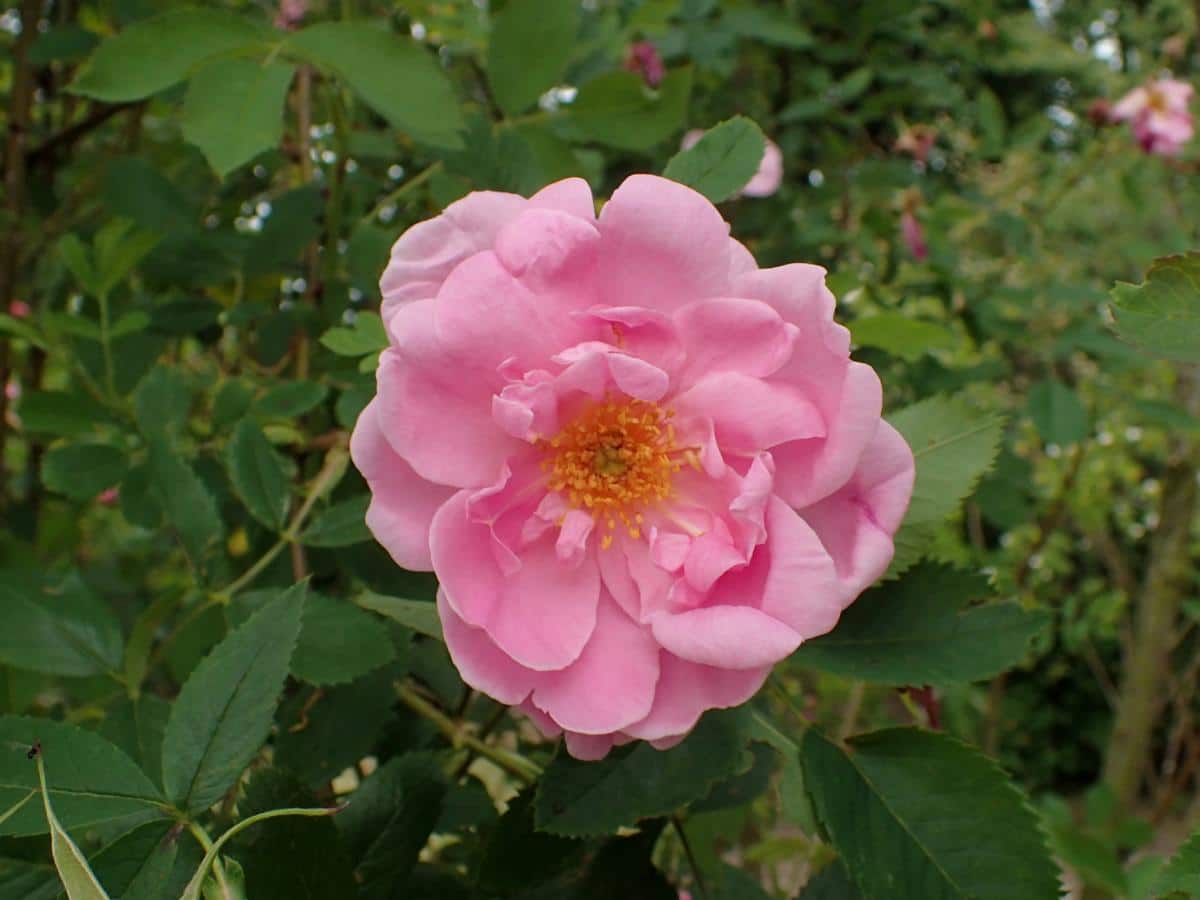
| Introduced: | 1959 |
| Breeder: | H.F. (Bert) Harp |
| Color: | Glowing pink with golden stamens |
| Fragrance: | Mild |
| Size: | Up to 8’ |
| Zone: | 3b and warmer |
| Cultivar Group: | Shrub |
| Repeat bloomer |
‘Prairie Dawn’ bears nodding blooms with a Scotch briar scent, and its flowers last a wonderfully long time. ‘Prairie Dawn’ blooms continuously in large clusters, from summer until frost, with no disease. Now, this rose tends to bear most of its bloom at the top and neglects the lower part, so you might do well to plant another rose in front of it! ‘Dawn’ is a big shrub but has good form overall and is stunningly floriferous.
Sometimes, the rose will refuse to bloom for the first few years. Have patience – once ‘Prairie Dawn’ gets established, it will really start going.
The Swedish Rose Society recommends ‘Prairie Dawn’ for northern Sweden, so that’s a definite point for hardiness.
‘Morden Snow Beauty’
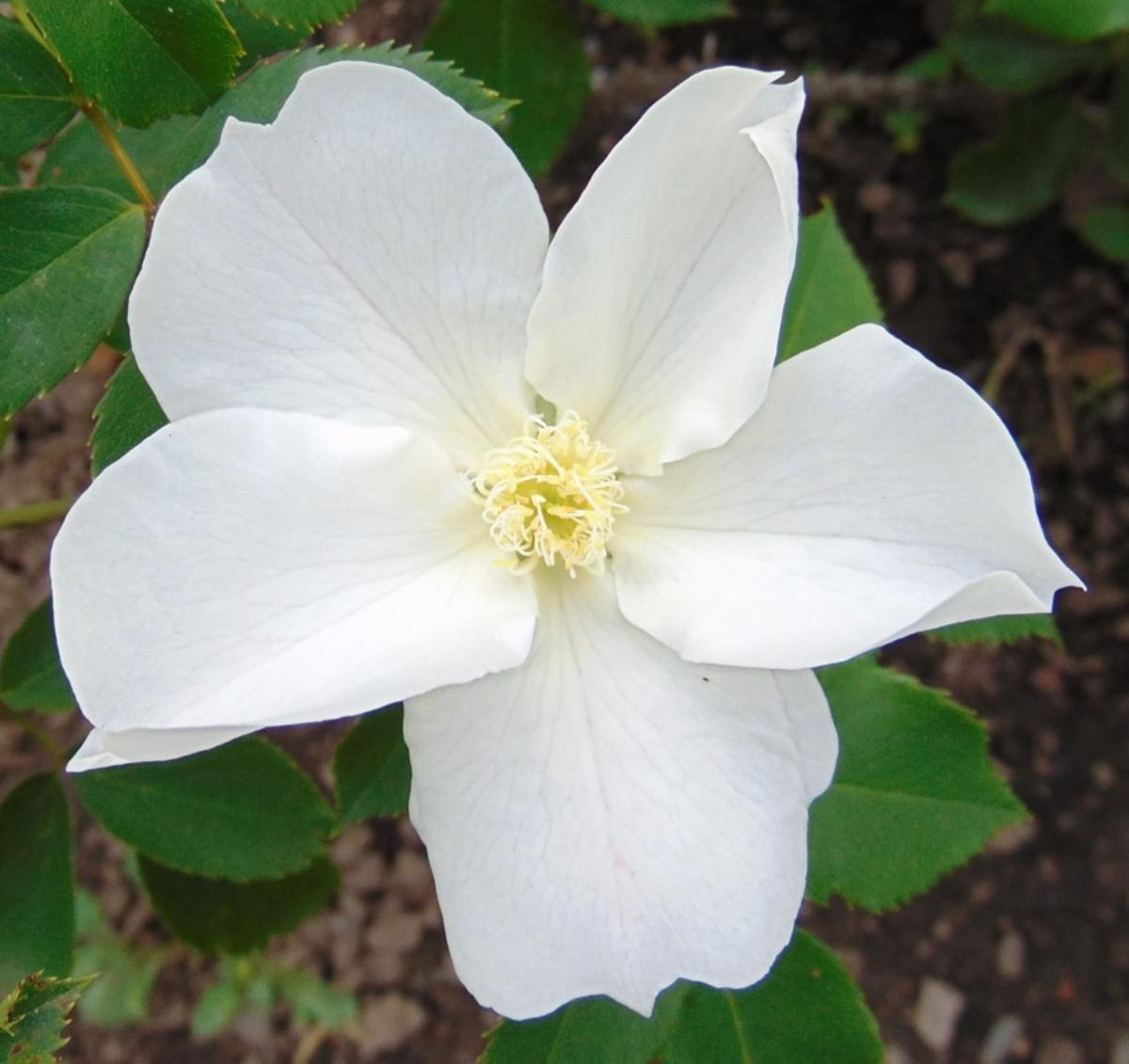
| Also known as: | ‘Morden Snowbeauty’ |
| Introduced: | 2001 |
| Breeder: | Lynn M. Collicutt, C.G. Davidson |
| Color: | White and white blend |
| Fragrance: | Mild |
| Size: | 3’ |
| Zone: | 2b and warmer |
| Cultivar Group: | Shrubs |
| Repeat bloomer |
‘Morden Snow Beauty’ is hardy in the Canadian sub-arctic, north of 60°. One grower stated, “It survived a bitter winter planted on the shore of the Great Slave Lake without any protection or help. And it’s blooming beautifully again this summer.”
Bears single flowers. Buds show just the slightest hint of pink before opening to pure white flowers.
In its first year or two, ‘Snow Beauty’ looks like tiny twigs when growing from own-root bare-root stock, but they will catch up to potted roses by the third year.
‘Winnipeg Parks’
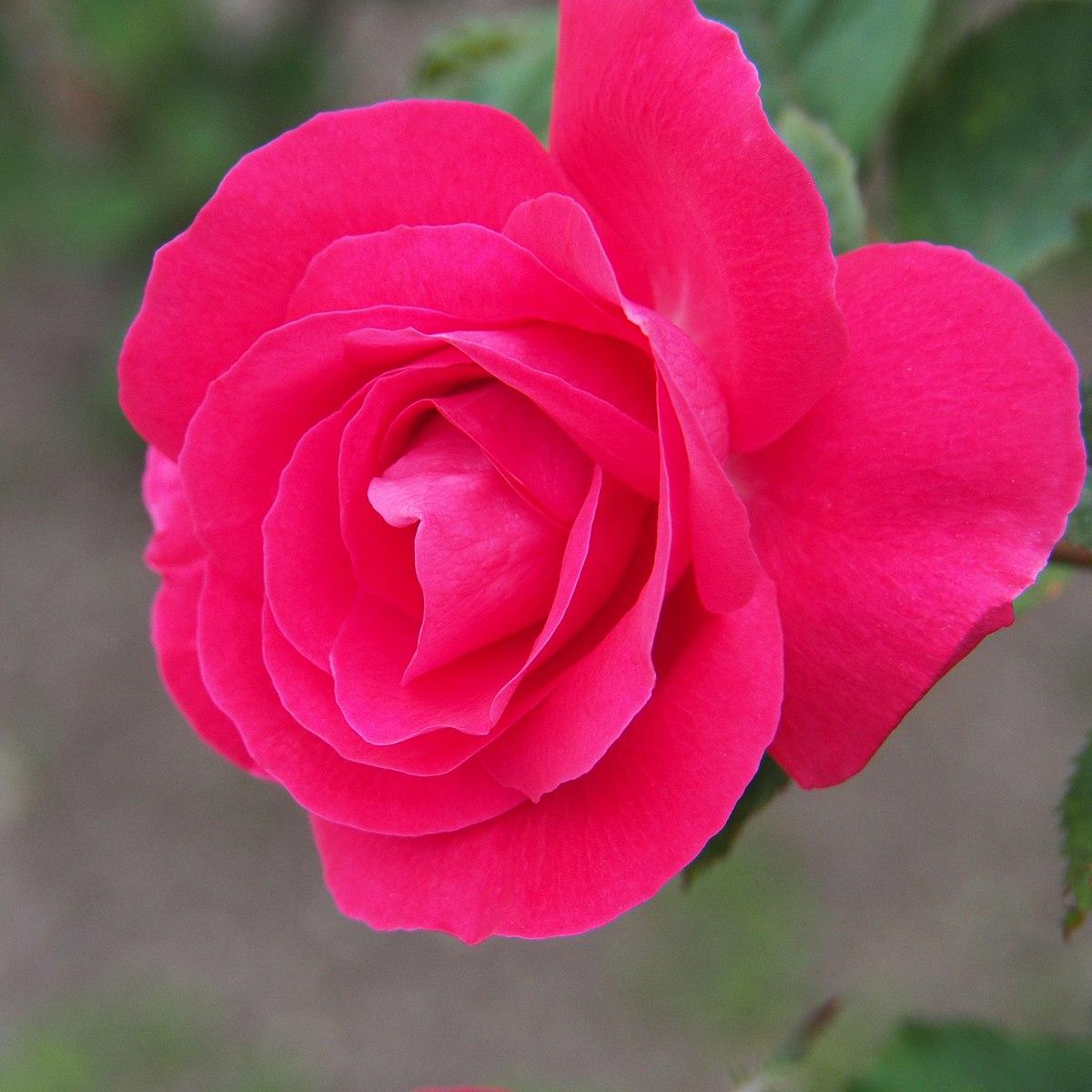
| Introduced: | 1990 |
| Breeder: | Henry H. Marshall |
| Color: | Cherry red to dark pink |
| Fragrance: | Mild tea |
| Size: | 2’ to 3’ |
| Zone: | 2b and warmer |
| Cultivar Group: | Shrub |
| Repeat bloomer |
An upright, bushy rose that bears vivid reddish-pink, cuplike flowers that are self-cleaning (i.e., fall off without having to deadhead). Has a great double form and big blooms with color in a cheery red similar to ‘Knock Out’ roses. Fragrance varies from plant to plant, moderate to faint. Grows and blooms during extreme heat and drought.
Hardy to -40°C (-40°F). Canes will die back to the ground in winter in zone 3, but the rose will rebound in spring and be full size again by July.
Outstanding resistance to powdery mildew, blackspot, and rust. Works well as a landscape rose or a bedding plant. Bears red hips that last into winter.
‘Winnipeg Parks’ was developed from a cross between the Rosa arkansana hybrids ‘Morden Cardinette,’ ‘Cuthbert Grant,’ and ‘Prairie Princess.’
‘Morden Sunrise’
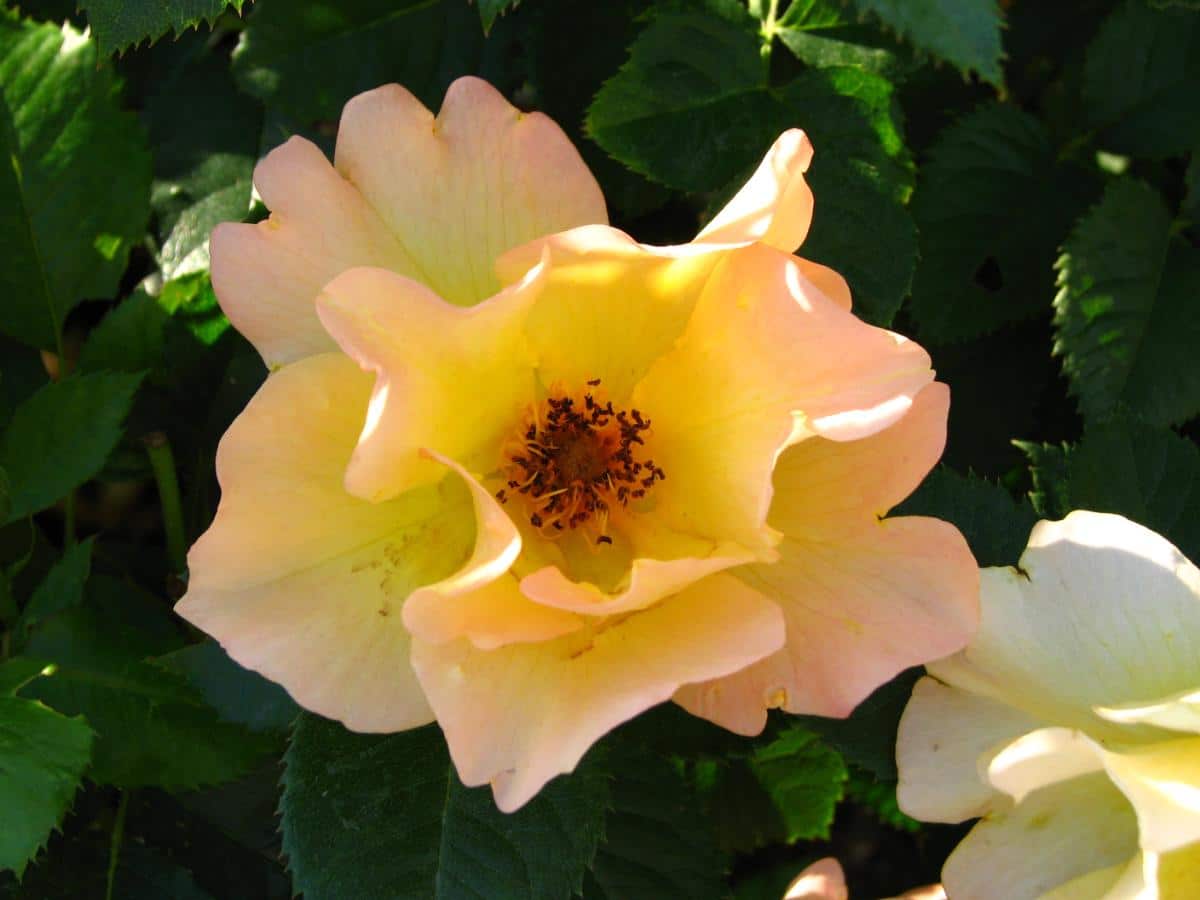
| Introduced: | 1999 |
| Breeder: | Campbell G. Davidson and Lynn M. Collicutt |
| Color: | Yellow, orange, pink |
| Fragrance: | Moderate |
| Size: | 2’ to 4’ |
| Zone: | 3 to 9 |
| Cultivar Group: | Shrub |
| Repeat bloomer |
‘Morden Sunrise’ features cheerful yellow and yellow-orange semidouble blossoms with ruffled petals. This little shrub rose, which grows about two to three feet tall, is disease-resistant and quite hardy with glossy, deep green leaves. This rose puts on a colorful show with the blooms. The colors range from butter yellow to yellow-orange, then to apricot and dusty pink, and it starts the show in early spring.
In some areas ‘Morden Sunrise’ is susceptible to a species of blackspot that completely defoliates it by July, so it will need a systemic fungicide or regular spraying.
Related: 10 of the Most Delightfully Fragrant Roses You Can Grow
‘Adelaide Hoodless’
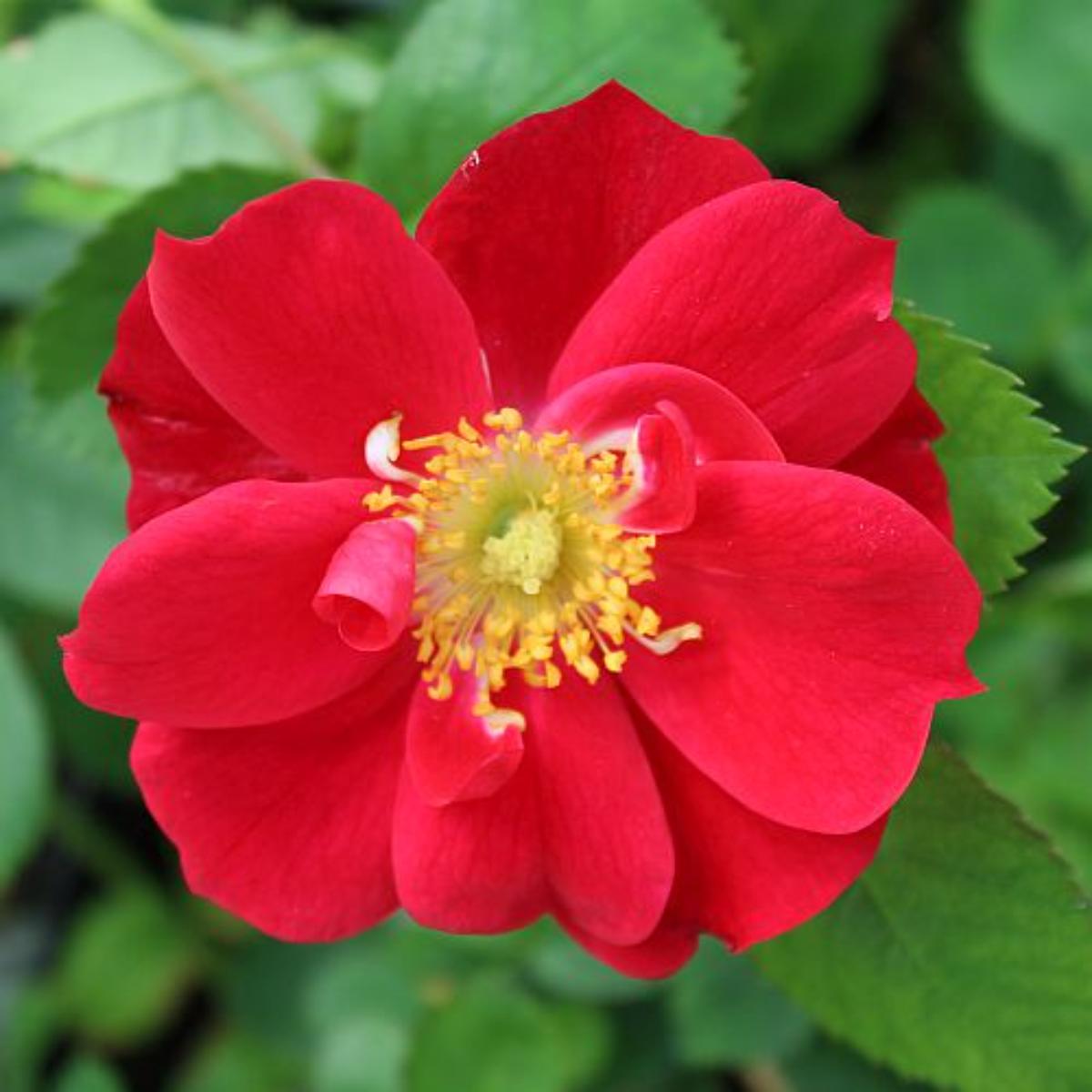
| Introduced: | 1973 |
| Breeder: | Henry H. Marshall |
| Color: | Deep red, golden stamens |
| Fragrance: | Slight |
| Size: | 3’ to 6’ |
| Zone: | 3a and warmer |
| Cultivar Group: | Floribunda, Shrub |
| Twice bloomer |
Floriferous and vigorous, ‘Adelaide’ is a popular rose in the Canadian prairies, flourishing in their cold climates with short seasons with little care or maintenance. It produces large clusters of up to 35 crimson blooms once in summer and again in fall. The rosebush has an open habit, with long canes in graceful arches. Deadhead the rose after the first flush dies off to get a second flush of blossoms. Prune the rose only when you are trying to get more flowers or removing deadwood.
‘Morden Centennial’
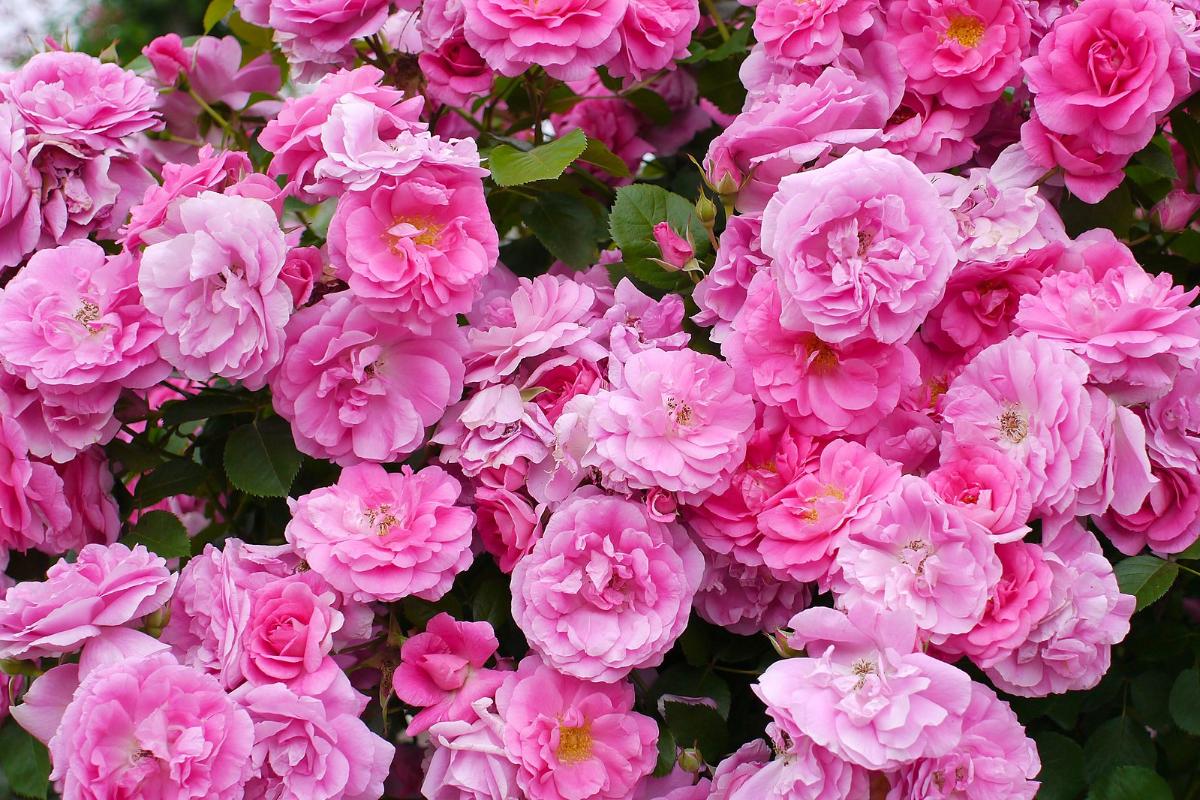
| Introduced: | 1980 |
| Breeder: | Henry H. Marshall |
| Color: | Carmine pink |
| Fragrance: | Moderate |
| Size: | 3’ to 5’ |
| Zone: | 3 to 7 |
| Cultivar Group: | Shrub |
| Repeat bloomer |
Another commemorative rose in the Parkland series – this time, it’s the ‘Centennial’ of the city of Morden, Manitoba. This rose bears big, very double blooms that almost look like peonies.
‘Centennial’ won The Outstanding Cultivar Award, which the Canadian Society for Horticulture Science awards to a plant that’s widely used as a standard through the nation and has made a big contribution to the industry.
Needs snow protection in some places in eastern Canada. Might not be as hardy as other Parkland roses – they will survive at -50° but might do better in an area where it gets down to only -40°.
‘Morden Fireglow’
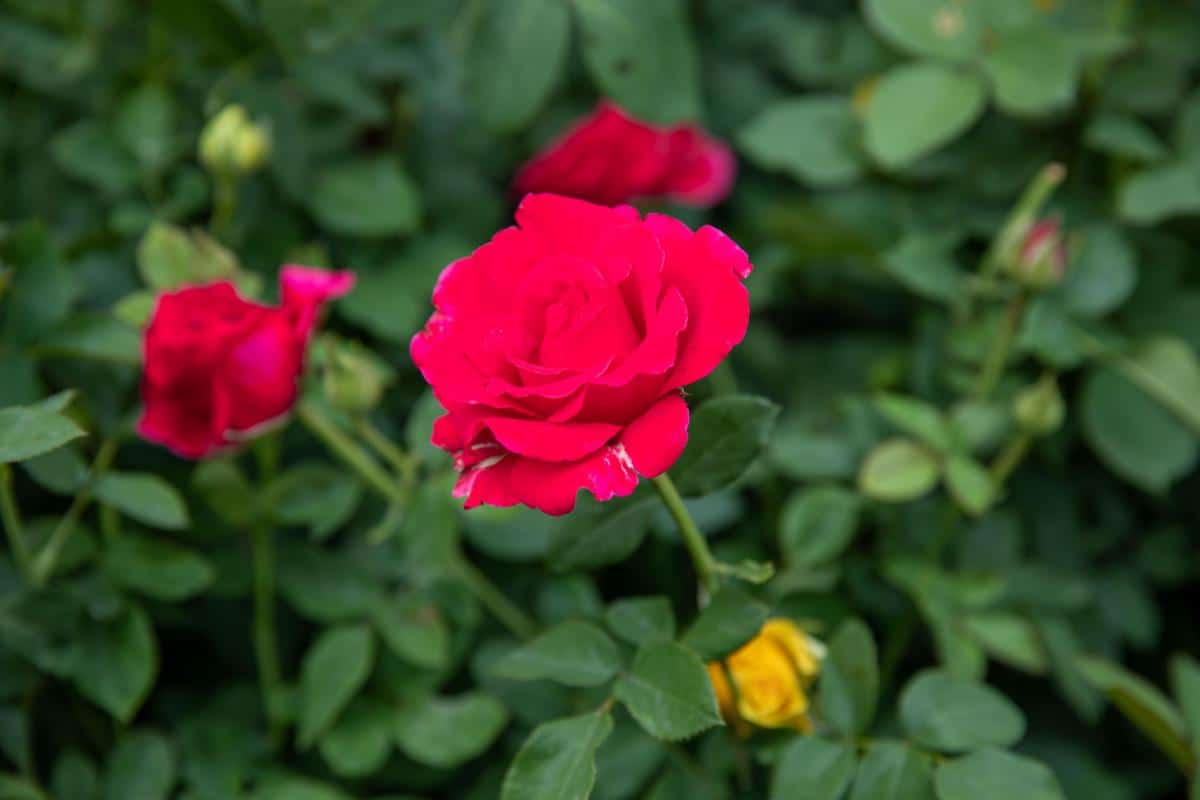
| Introduced: | 1989 |
| Breeder: | Henry H. Marshall and Lynn M. Collicutt |
| Color: | Scarlet red flowers |
| Fragrance: | Moderate to faint |
| Size: | 2’ to 3’ |
| Zone: | 2b and warmer |
| Cultivar Group: | Shrub |
| Repeat bloomer |
These fiery red flowers are rare in roses that can grow in the far north. ‘Morden Fireglow’ was a seedling of ‘Morden Cardinette’ that bears flowers in tight clusters, much like a floribunda. In the fall, it will produce orange hips if it hasn’t been deadheaded. It’s not a heavy bloomer, but it always survives. Its flowers last a long time.
A good choice for the front of a border or foundation plants. Susceptible to blackspot in some areas.
Related: 7 Tips for Growing a Low Maintenance Rose Garden + 7 Great Varieties
‘Hope for Humanity’
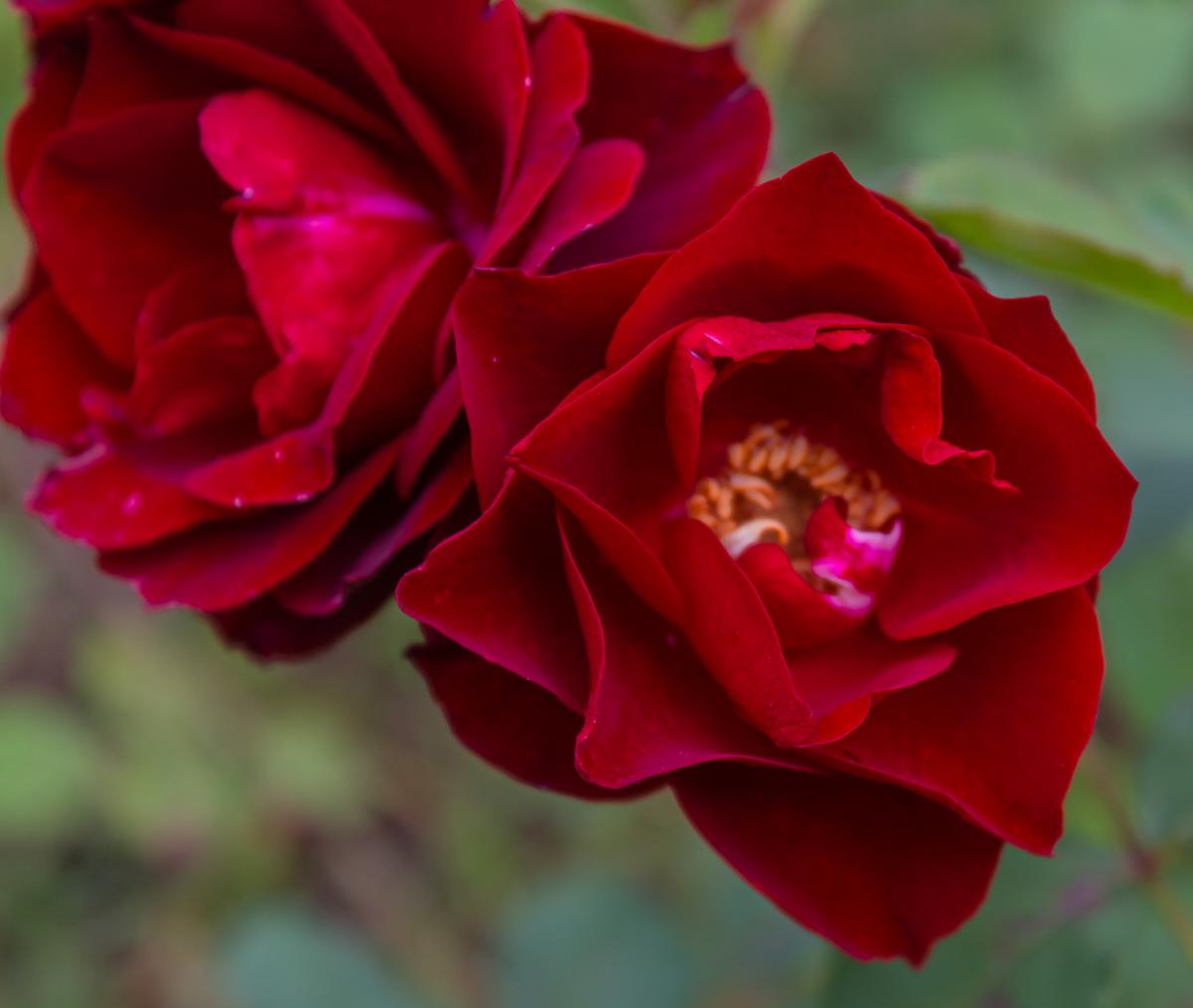
| Introduced: | 1995 |
| Breeder: | Lynn M. Collicutt |
| Color: | Deep wine red |
| Fragrance: | Mild |
| Size: | 7’ |
| Zone: | 3a to 7 |
| Cultivar Group: | Shrub |
| Repeat bloomer |
Note!! ‘Hope for Humanity’ has been listed online as being a low-growing rose. This is not true. ‘Hope’ grows to be 7 feet tall! Remember that now.
Named in honor of the 100th anniversary of the Canadian Red Cross, this tall climbing rose bears double, dark red flowers continuously over 10 to 14 weeks. The red color of these blossoms can get wonderfully dark, almost exhibition quality!
Makes a good pillar rose. ‘Hope’ shows superb heat tolerance, and the bloom color doesn’t fade in the sun. It will form hips, but the growing season in the far north might be too short to allow them to fully ripen.
Disease resistance is fairly good overall, though blackspot might creep in.
‘Morden Ruby’
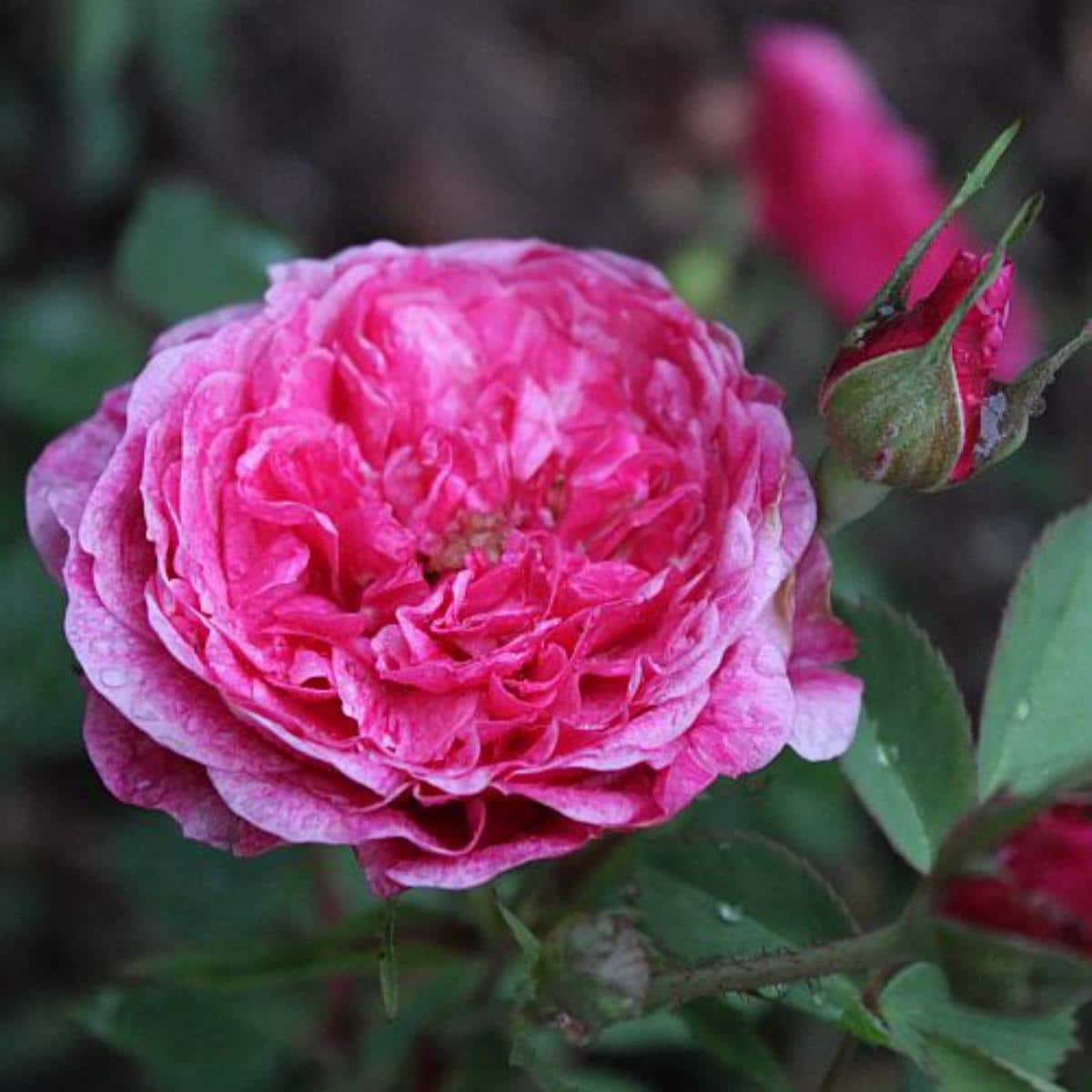
| Introduced: | 1977 |
| Breeder: | Henry H. Marshall |
| Color: | Ruby red |
| Fragrance: | Mild |
| Size: | 3’ to 4’ |
| Zone: | 2b and warmer |
| Cultivar Group: | Shrub |
| Repeat bloomer |
‘Morden Ruby’ is unique because of its pretty speckled flowers of pink and ruby solid red. ‘Ruby’ got her freckles from her ancestor, the wild prairie rose (Rosa arkansana), along with her tenacity and vigor.
Occasionally, the blossoms will revert to the less-often-seen solid shade of ruby.
‘Ruby’s’ dark green foliage turns yellow in fall, and she bears orange hips. This rose works well for cut flowers, gardens, and landscapes. Sister of ‘Adelaide Hoodless.’
‘Morden Belle’
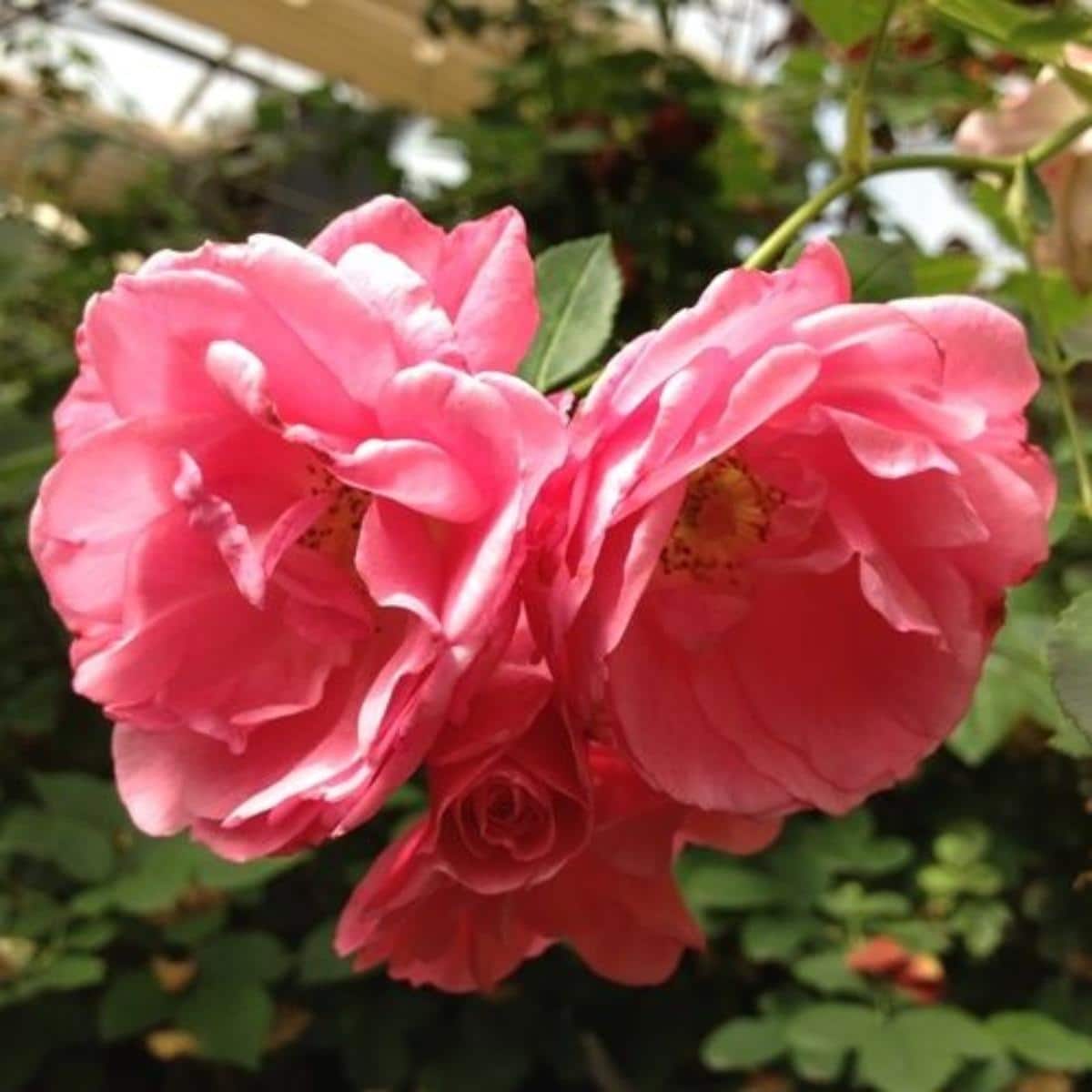
| Introduced: | 1990 |
| Breeder: | Lynn M. Collicutt |
| Color: | Medium pink |
| Fragrance: | Faint |
| Size: | 3’ to 5’ |
| Zone: | 3a and warmer |
| Cultivar Group: | Shrub |
| Repeat bloomer |
‘Morden Belle’ covers itself with hot pink flowers from late spring to mid-fall and displays dark-green foliage all season. Makes excellent cut flowers. In the fall, it bears showy red hips. This rose has ‘Prairie Princess,’ ‘White Bouquet,’ and ‘Scarlet Meidiland’ in its parentage.
‘Morden Belle’ bears its flowers at the ends of its long canes, like ‘Scarlet Meidiland’ does, so it might help to grow the rose against a fence or railing to keep the blossoms off the ground.
‘Morden Amorette’
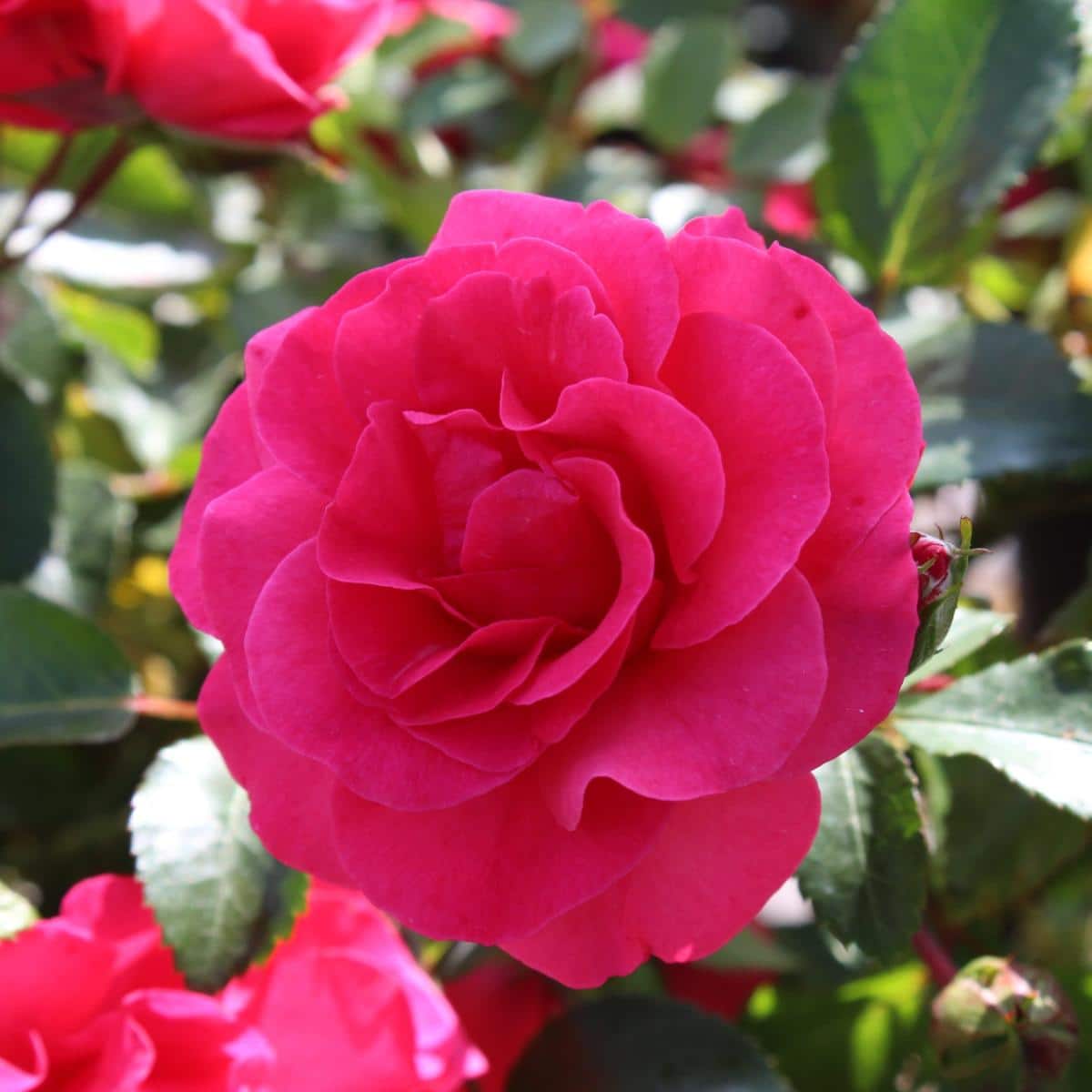
| Introduced: | 1977 |
| Breeder: | Henry H. Marshall |
| Color: | Carmine pink |
| Fragrance: | Mild |
| Size: | 2’ |
| Zone: | 3b and warmer |
| Cultivar Group: | Shrub |
| Repeat bloomer |
If you’re looking for a compact upright rosebush that absolutely doesn’t stop with blooms, ‘Morden Amorette’ is your rose. Reddish-pink flowers start blooming in summer and don’t let up until frost – deadheading spent blossoms improves the show. The inside petals curl into a ball around the center of the rose. Dwarf plants.
‘Cuthbert Grant’
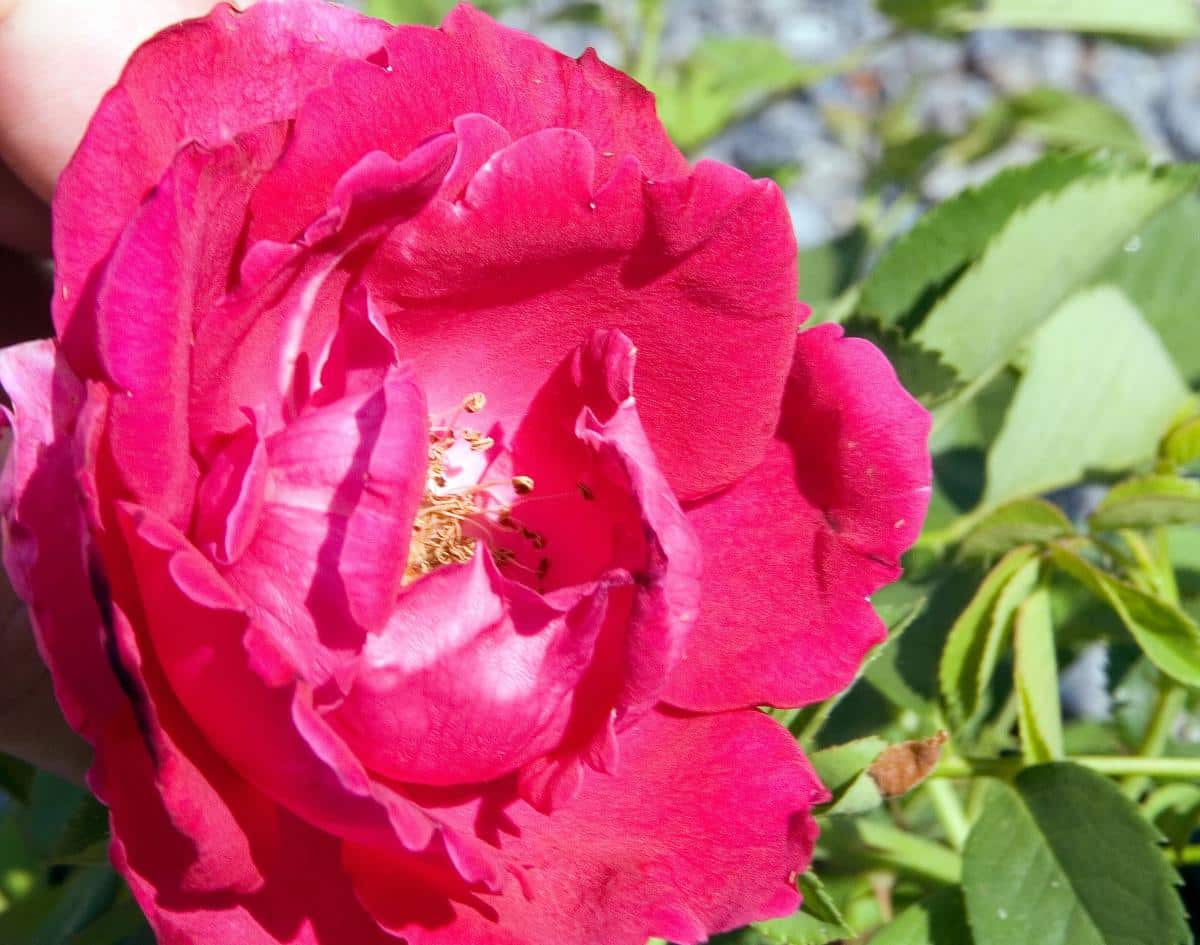
| Introduced: | 1967 |
| Breeder: | Henry H. Marshall |
| Color: | Velvety dark red |
| Fragrance: | Strong |
| Size: | 3’ to 4’ |
| Zone: | 2b to 7 |
| Cultivar Group: | Shrub, Hybrid Suffulta |
| Repeat bloomer |
An upright, compact shrub that produces clusters of velvety, dark red roses with a strong fragrance. This exceptional rose starts blooming in early summer and keeps piling on the red flowers until September. ‘Cuthbert’ is resistant to powdery mildew and blackspot and is hardy to zone 2. It’s a great choice for small gardens, can be placed in front of the border, and looks lovely in a large container. Great for cut flowers, too.
- Related: Roses Full Growing Guide (Plant, Grow, and Care)
- Related: 21 Best Companion Plants for Roses
‘Prairie Joy’
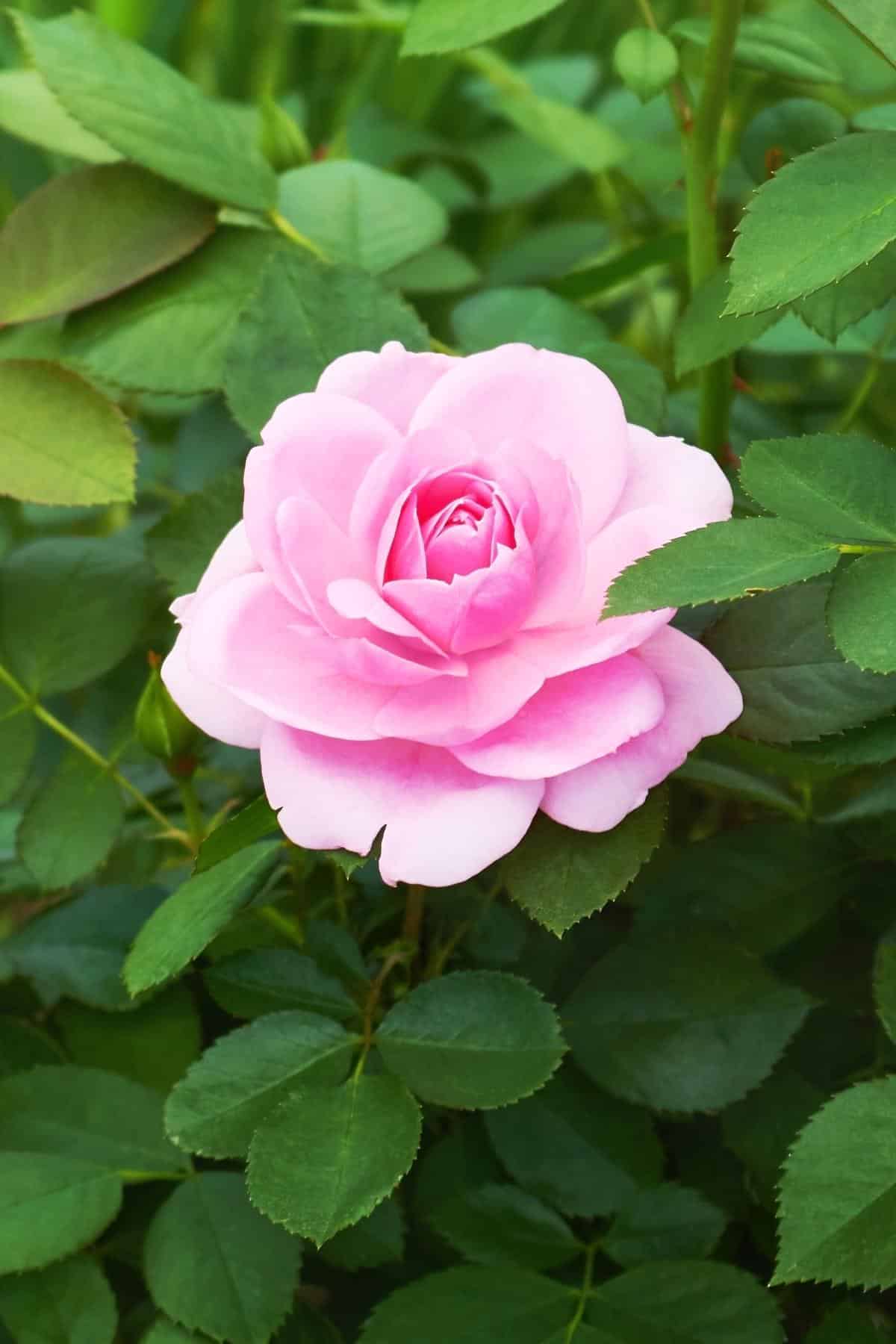
| Introduced: | 1990 |
| Breeder: | Lynn M. Collicutt |
| Color: | Medium rose |
| Fragrance: | Faint |
| Size: | 3’ to 5’ |
| Zone: | 3b and warmer |
| Cultivar Group: | Shrub |
| Repeat bloomer |
One of the most maintenance-free and rewarding roses you’ll have the pleasure of meeting. It’s a disease-free rose, completely hardy without winter protection. The rose will insist on producing new growth up until the hard frosts arrive.
These old-fashioned blooms are borne in clusters Once the rose is established, it will bloom nonstop in clusters until frost. Use ‘Prairie Joy’ as a hardy hedge rose.
‘Prairie Celebration’
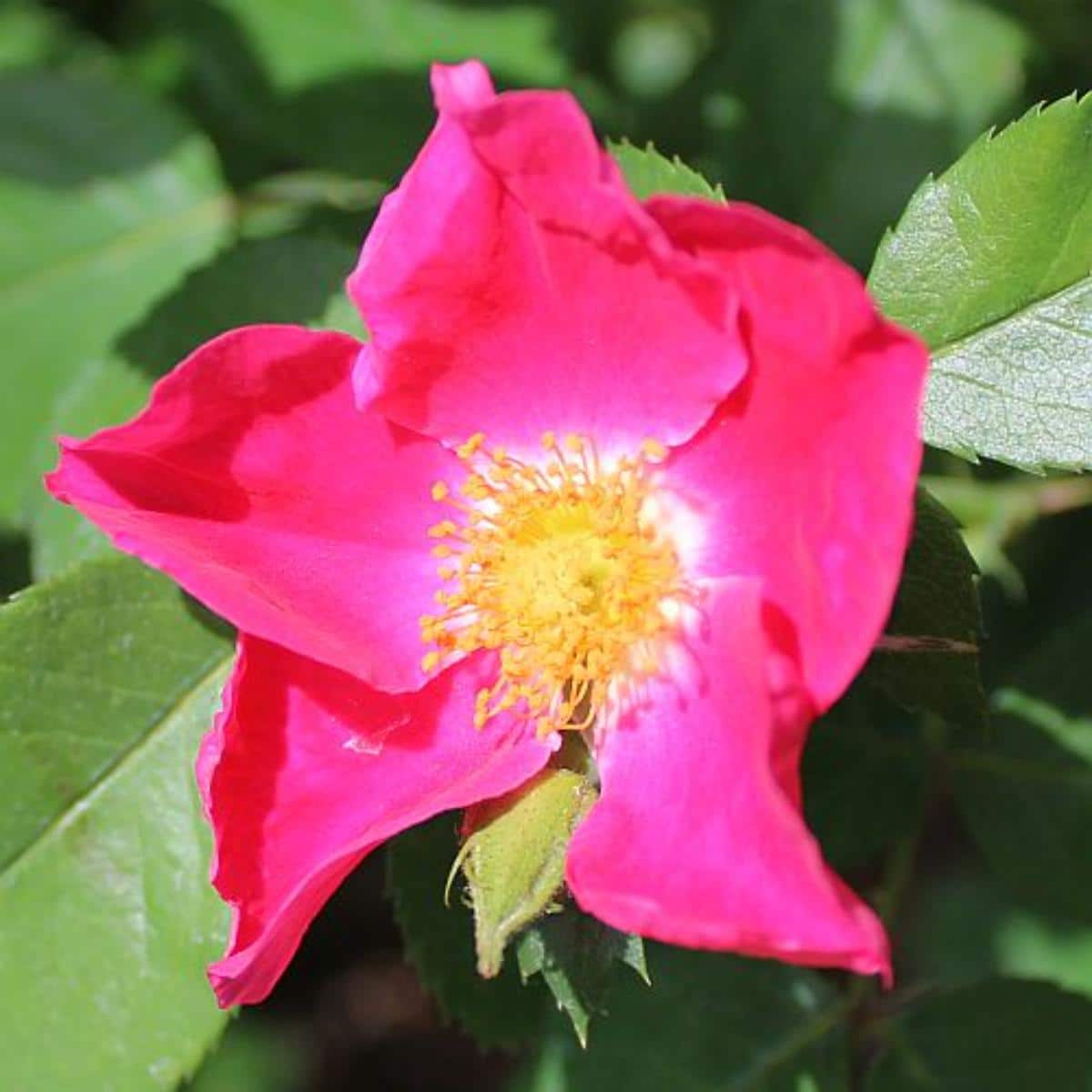
| Introduced: | 2003 |
| Breeder: | Lynn M. Collicutt and Campbell G. Davidson |
| Color: | Vibrant red-pink |
| Fragrance: | Mild |
| Size: | 3’ to 5’ |
| Zone: | 2b and warmer |
| Cultivar Group: | Shrub |
| Repeat bloomer |
Vibrant dark pink, single-flowered rose with a bit of white in the middle behind the golden stamens. An annual pruning will help rejuvenate the rosebush and encourage flowering. Rarely seen in commerce (though High Country Roses currently has ‘Prairie Celebration’ in stock).
‘Morden Cardinette’
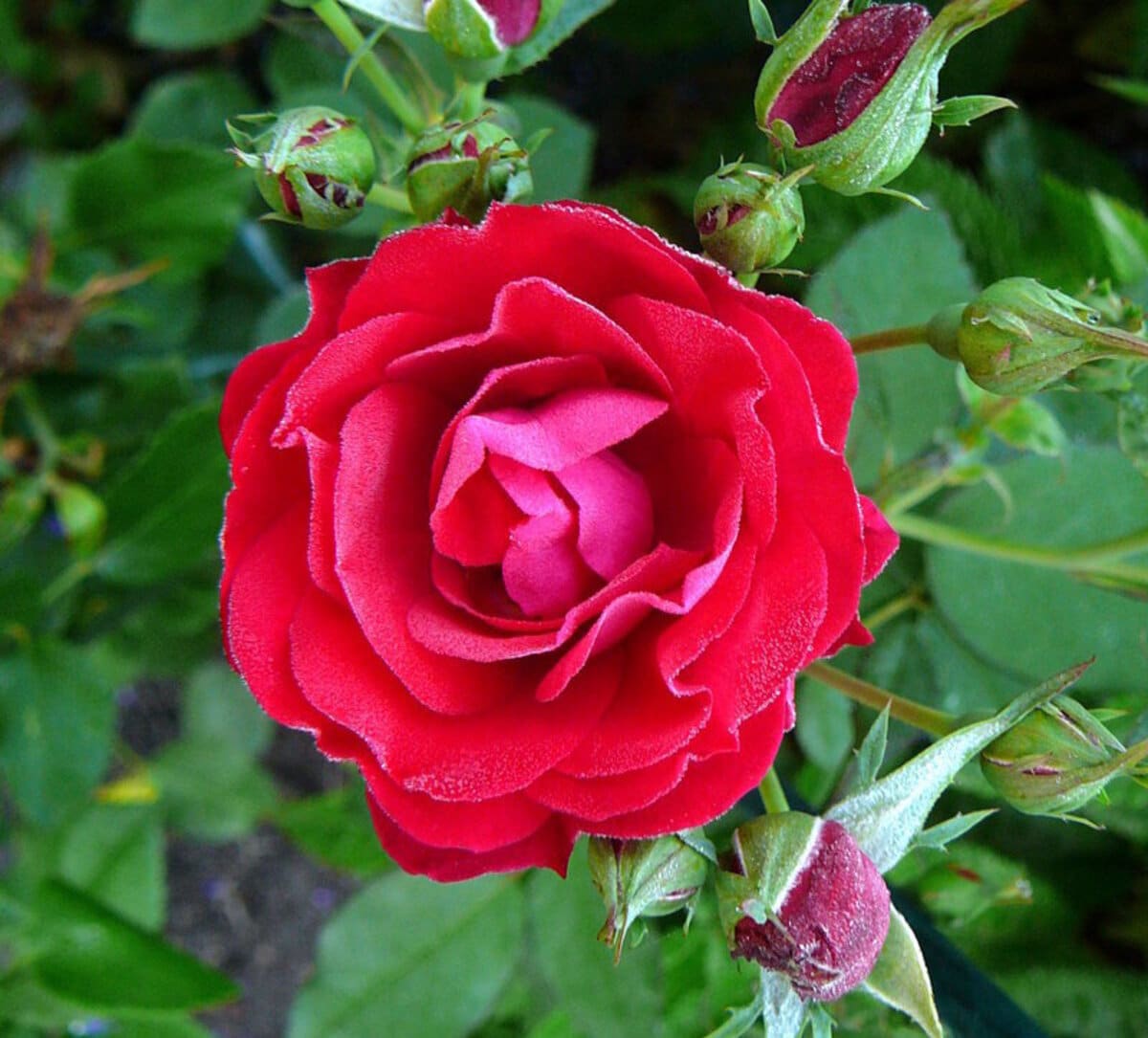
| Introduced: | 1980 |
| Breeder: | Henry H. Marshall |
| Color: | Cardinal red |
| Fragrance: | Mild |
| Size: | 2’ to 3’ |
| Zone: | 3b and warmer |
| Cultivar Group: | Shrub |
| Repeat bloomer |
A dwarf rose that does very well as a potted plant, as the blossoms of ‘Cardinette’ are much larger than your average potted rose. It’s seldom seen in commerce these days; apparently, it wasn’t the best at reblooming.
Moderate resistance to powdery mildew and blackspot.
Conclusion
These tenacious roses were made not only for folks in the north and far north but for anybody who wants to raise vigorous roses that don’t need spraying or a whole lot of attention but can withstand harsh weather. The Parkland rose series delivers on that.
Read more:

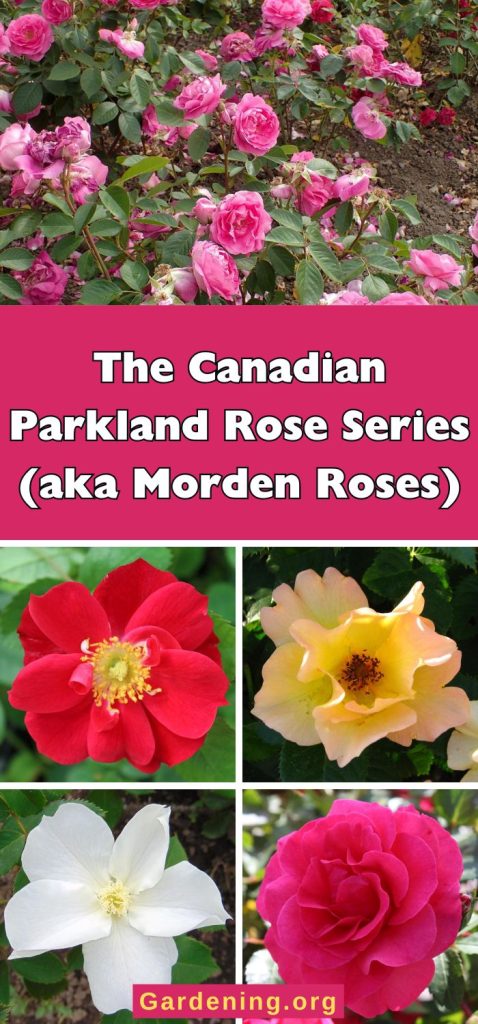
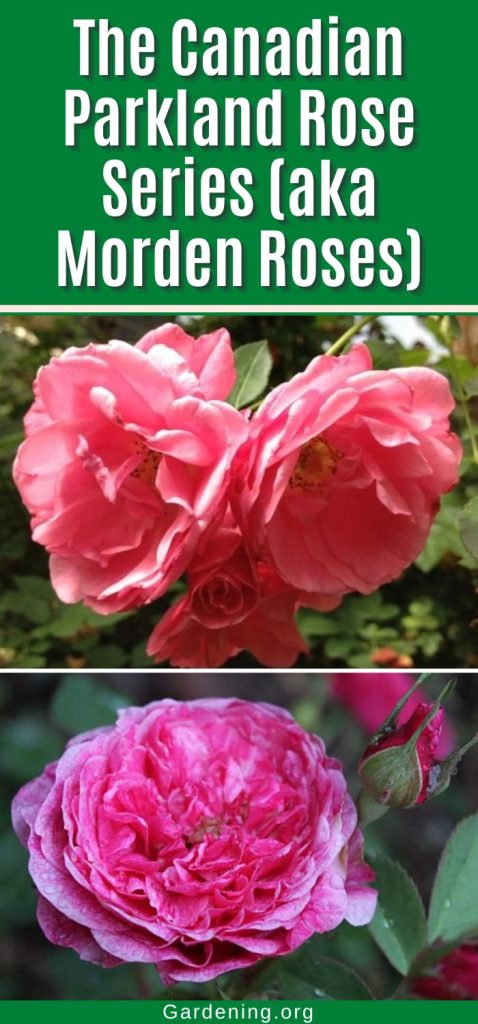
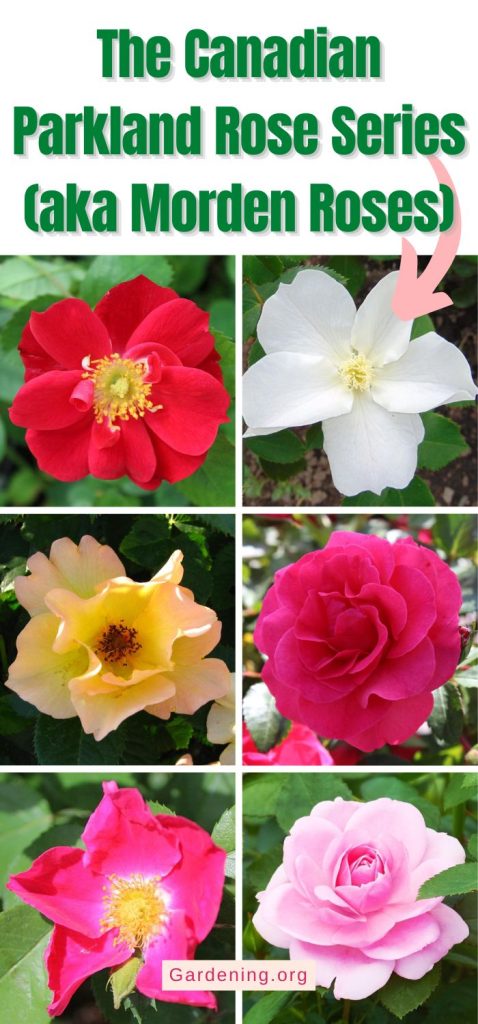
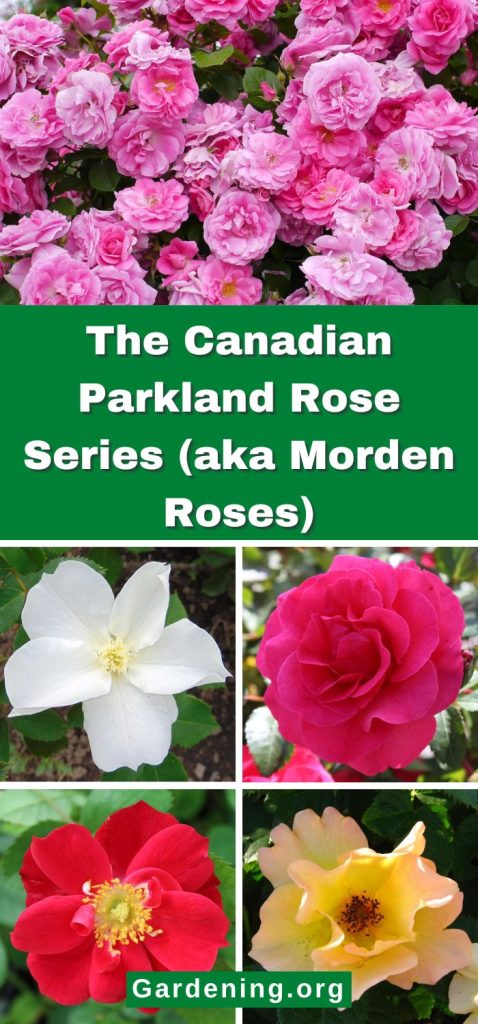
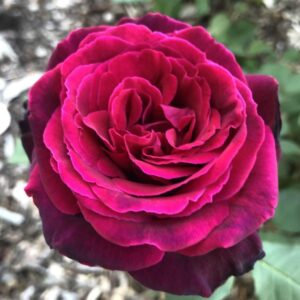
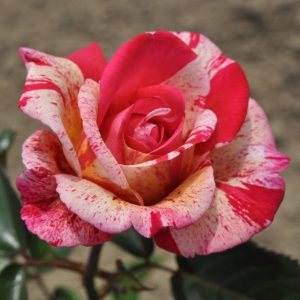
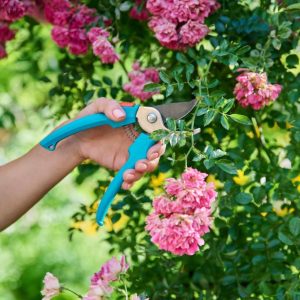
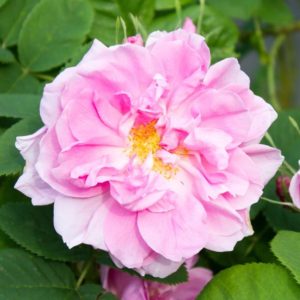
Leave a Reply